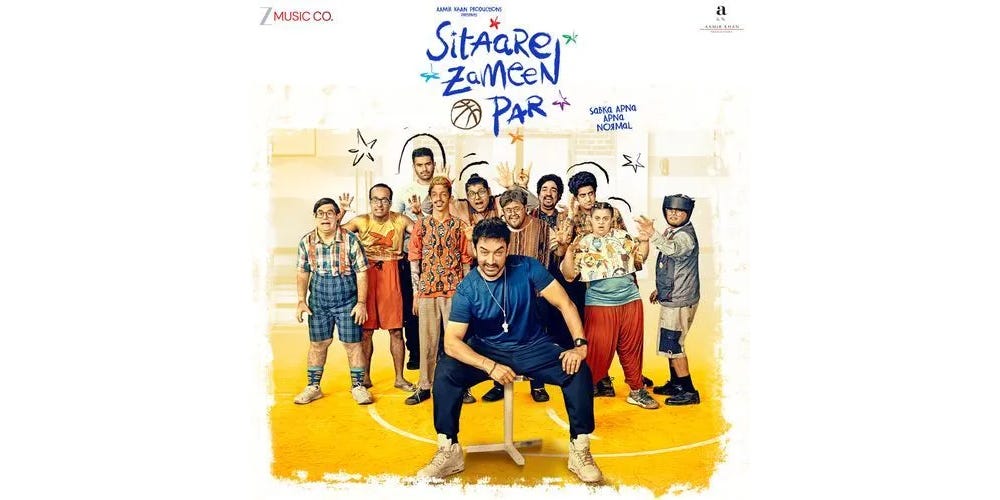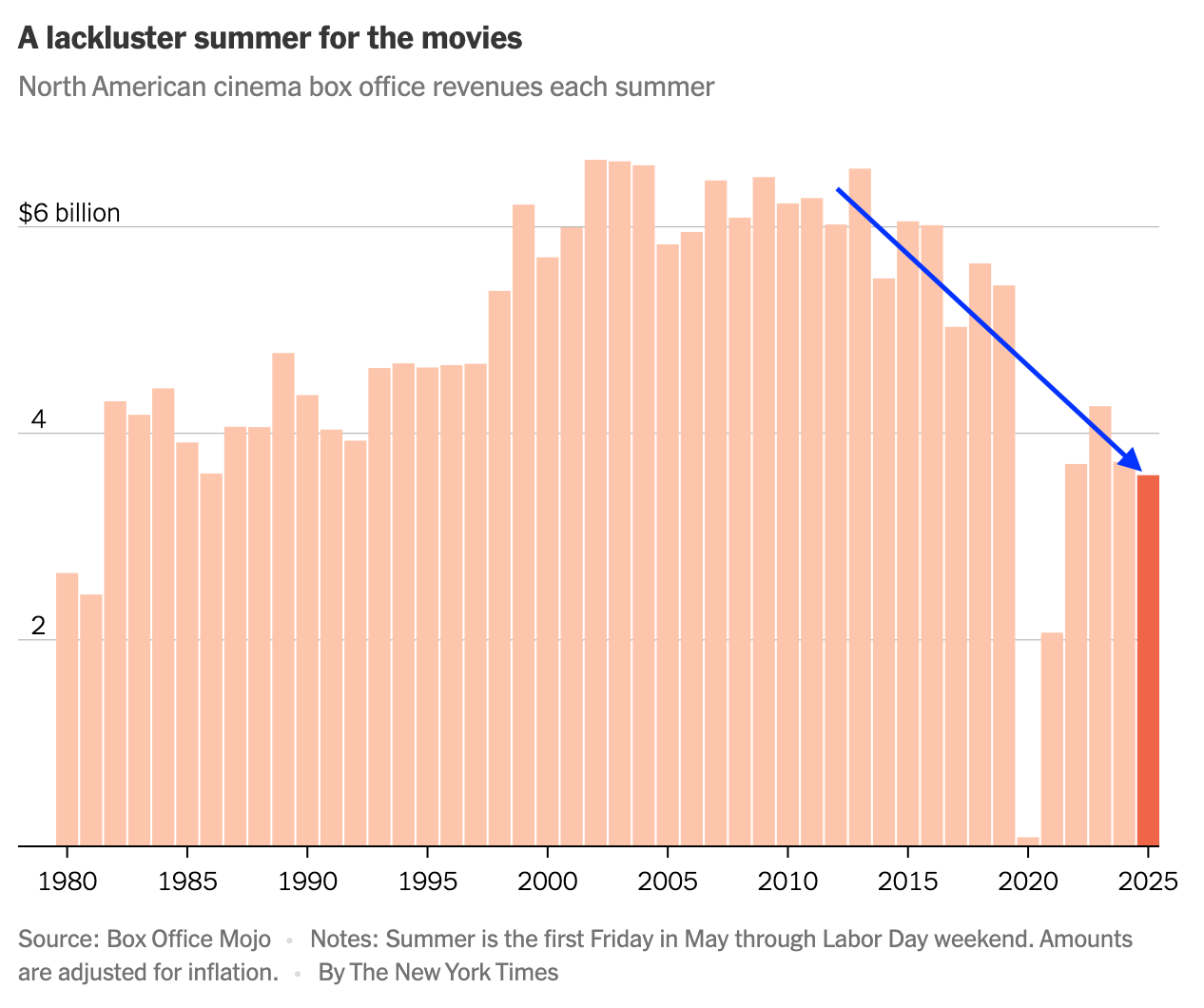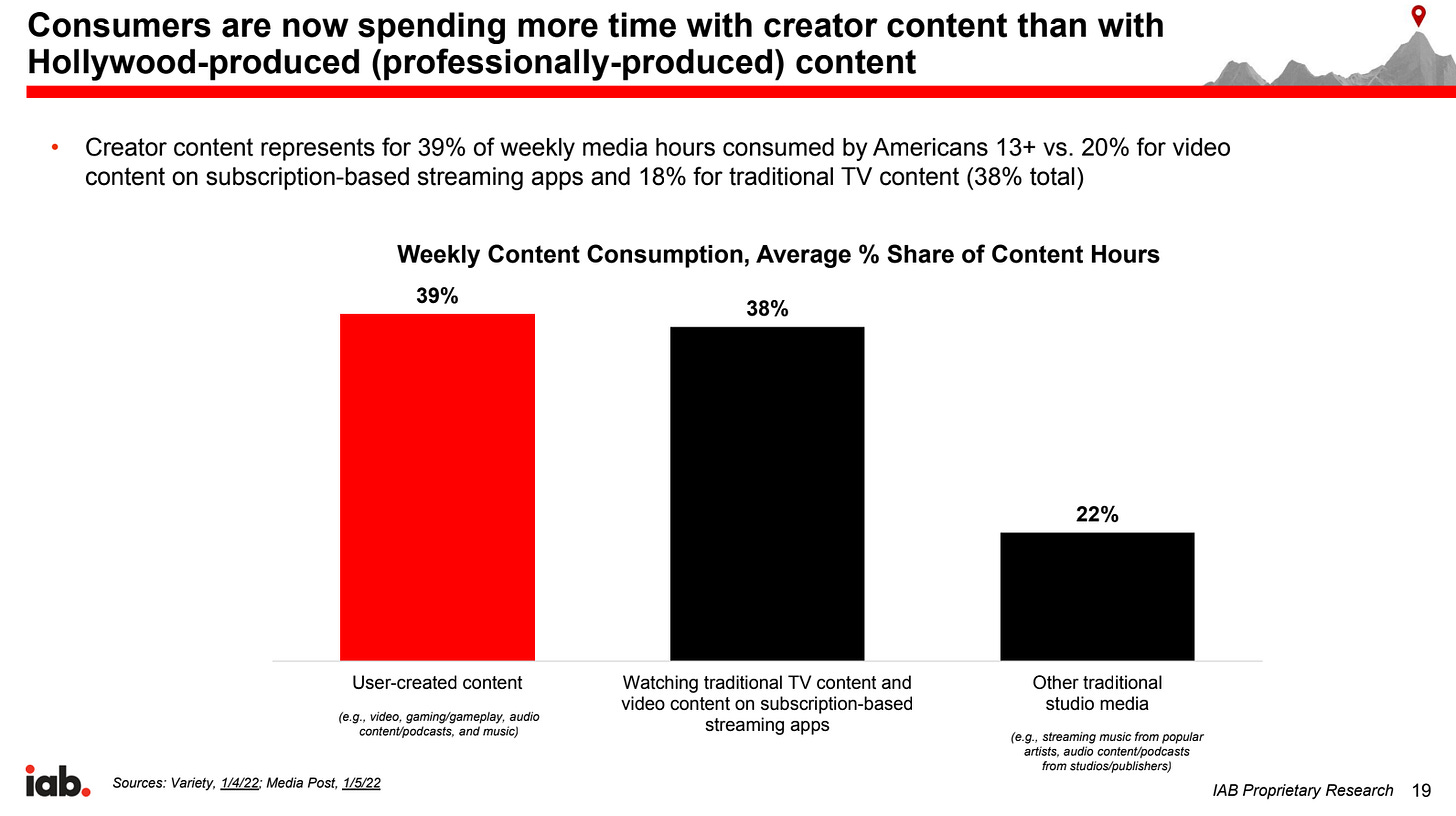Calling Creators “Kids” Is How Legacy Media Lost the Plot
How Social Video Platforms are Disrupting Traditional Entertainment
On Sep 3 2025, the New York Times ran a headline, “Behind the Numbers: How Hollywood Missed Its Mark This Summer”, on how an expected return to pre-COVID spending failed to happen. At the top of the article was this graph (I’ve added a blue trend line).
I believe that consumption patterns for traditional entertainment will not return to pre-COVID levels. And while COVID had a drastic impact on the industry, it was not the cause of the ongoing decline. The most positive interpretation of this chart is that the curve may be starting to flatten, but there is no sign of a rebound from a trend that began in 2014.
What we are seeing is instead a massive disruption in how we consume entertainment content — and how publishers distribute the same.
The IAB Brand Disruption Report, highlighting data from 2022, showed that North American consumers spend more time with creator-based media than all traditional entertainment media.
And let’s not forget that digital video ad spend surpassed traditional TV spend in 2024 and is expected to reach 58% of spend this year.
And yet, time and again, I run into the same misbelief that “these creators are just kids in their bedroom” and nothing for traditional media to worry about.
Sure, there are plenty of creators who started with a camera in their bedroom, but a growing number of these “kids” have full-fledged and staffed businesses that are generating significant revenue while building brands that their audiences are willing to pay to watch.
Spotify made a notable move into video recently and has already seen significant growth, with “more than 350 million users” watching a video podcast on Spotify.
YouTube is likely the best known platform for longer-form video, and recently announced that next year they will be launching Digital Ad Insertion tech for YouTube creators to deliver sponsorships: a move that will transform advertising in social video, just as it did in podcast audio.
Mr. Beast runs an entertainment brand with a net worth of over $1 billion.
College Humour made a name for itself on YouTube before rebranding as Dropout TV, with a paid subscription app on Roku, Apple TV, Amazon Fire TV, Google TV, Android TV, and select smart TVs. CEO Sam Reich went on the record to say that they are within spitting distance of a million monthly paid subscribers, giving them an estimated monthly recurring revenue of over $6 million.
Rhett and Link met in elementary school and launched a comedy channel on YouTube. Their company, Mythical Entertainment, has a staff of over 100 people, 34 million subscribers, and partial annual earnings of $36 million.
The list goes on and on with hundreds of thousands of creators generating significant monthly revenue on these platforms.
Many in traditional media continue to wave these away as outliers, but this is dangerously short-sighted. I believe we are now living through the disruption that is forming the future of entertainment and we don’t have to look too deep to see the issues at play in traditional media.
Paramount and Skydance’s $8bn merger is resulting in more than 2,000 layoffs. It’s not alone, with Deadline reporting thousands of job losses in the media business throughout the year.
Disruption is never a clean line in the sand, but rather a series of forces that slowly undermine the ground an industry is built upon, with many false starts and stops, requiring and selecting for more nimble organizations (and in this case, content creators) that can adapt and leverage these changes. But the end result is a seismic transformation of the landscape.

I wanted to end with a trend we are watching in South Asia where broadcasters, production companies, and creators appear to be hedging on, or even bypassing traditional distribution — and launching their shows directly on platforms like YouTube, both ad supported and pay-per-view. Some sources claim that over 90% of all online video consumption in the region happens on YouTube.
YouTube reach in India alone is 491 million people, making it not just a viable distribution platform, but a behemoth. We expect it is only a matter of time before this is copied by producers in North America, with high likelihood this is already in play. YouTube is already the largest TV company in the US, say Nielsen.
Media and entertainment are being disrupted by both platforms and creators.
These creators are not kids in a bedroom, they are business owners building new empires.
They require tools built for this environment from pioneering firms in audience targeting, brand safety, data analysis, order management, and more – new solutions for a new era.





